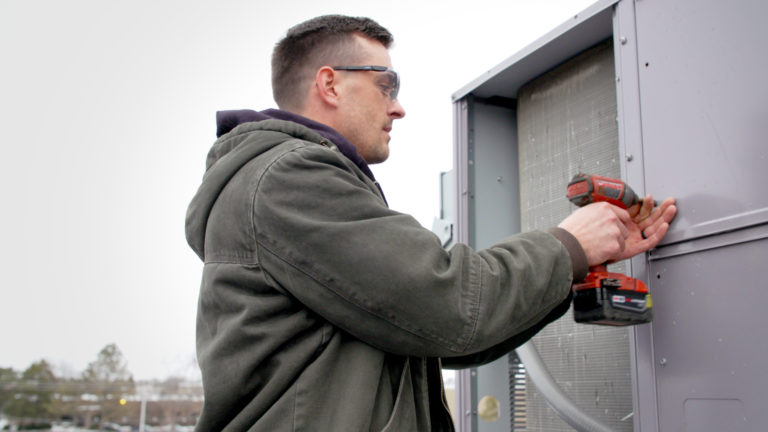The light fixtures in an old commercial office building continue to break. The maintenance staff adds the support ticket to their growing list of facility repairs. Unfortunately, the lack of resources causes a delay to a simple repair. This minor issue means staff cannot work in the office, delaying projects, decreasing employee productivity, and reducing overall organizational function. Proper facility management supports the safety and maintenance of buildings and assets.
What is the role of facility management?
Why is facility management so important for businesses? Every business with a physical location or assets needs various functions and services to support the core business. Onsite facilities management companies work behind the scenes to ensure this support is in place while working within budgetary limitations and meeting facility management best practices.
One of facility managers’ primary responsibilities is ensuring the work environment is safe, operational, and conducive to quality work. In addition, facility managers oversee property management, building maintenance, and support services. These functions and efforts can vary based on the type of organization and building.
What are the five main tasks of facilities management?
Facility managers are involved in lots of tasks to support business operations. But, what are the key areas?
The roles and responsibilities of facility managers encompass all areas of business operation, but you can group them into five high-level categories; facility maintenance, people management, safety, streamlining processes, and systems. These categories apply to most forms of facilities management, but subtasks will vary depending on the business needs.
1. Facility Maintenance
The primary function of facilities management is facility maintenance and improvement. This could include the maintenance of physical buildings, assets, or equipment such as heavy machinery. In addition to repairs, the team is responsible for preventative maintenance and identifying risk areas for larger service requirements like major repairs or replacement of any heating and cooling systems.
Anything involving the physical assets of the company is the responsibility of the facilities management teams. Facility managers also provide corporations with cost-saving, energy efficiency, and sustainability recommendations.
2. People Management
Facility managers play an integral role in establishing and maintaining a comfortable environment for company staff. This involves managing a team to create positive workplace cultures, attract new talent, and improve productivity. In addition to team management, facility management supports the organization through furniture placement, developing emergency plans, and facilitating optimal space management. Facilities management coordinates with the organization staff and their team to finalize any workplace support services.
3. Ensuring Safety
Building management, emergency management, cleaning, and inspections are all designed to improve the health and safety of the staff and customers. Various regulations are in place to ensure health and safety for everyone in commercial buildings, and one of the functions of facilities managers is to ensure compliance. Lack of compliance can lead to extensive fines and sick staff or customers. Sanitation and safety compliance is even more critical in health care buildings such as hospitals and nursing homes.
4. Streamlining Processes
Simplifying processes or automating them can significantly reduce facility operations costs. By creating simple, standard operating procedures, facility managers create better work environments that positively impact the use of the space. These processes work to enhance efficiency and scalability as businesses continue to grow. Facility management teams can create processes for placing support tickets, emergency procedures, managing customers, and directory management.
5. Systems
Automating systems with the latest technology enables an organization to meet its energy efficiency, sustainability, and redundancy goals. Managing systems manually onsite can be limiting for a facilities management team. Many facilities and system management applications are cloud-based, enabling remote access for service and troubleshooting. These systems also work to streamline task delegation within the team.

What are the different types of facilities management?
Facilities management falls into two basic areas: hard facilities management and soft facilities management. Hard facilities management focuses on maintaining and repairing physical assets within a building, such as plumbing, wiring, elevators, and HVAC systems. Soft facilities management focuses on custodial services, lease management, accounting, catering, security, and groundskeeping. Other areas of facility management could include capital project management, energy management, space management, real estate management, and emergency management.
Most facility management companies specialize in a specific type of facility management. It is important to ask about the specialization when hiring a new company.
Facility management can make a big impact on the efficiency and support of a company. Proactive planning, support services, and systemized processes all support the core business, ensure office efficiency, and reduce unplanned maintenance downtime.
Experienced facilities professionals can be hard to find. With over 142 years of experience, Kroeschell’s team has worked with many organizations to streamline their operations.
Schedule a call with Kroeschell to learn more about Facility management services.


